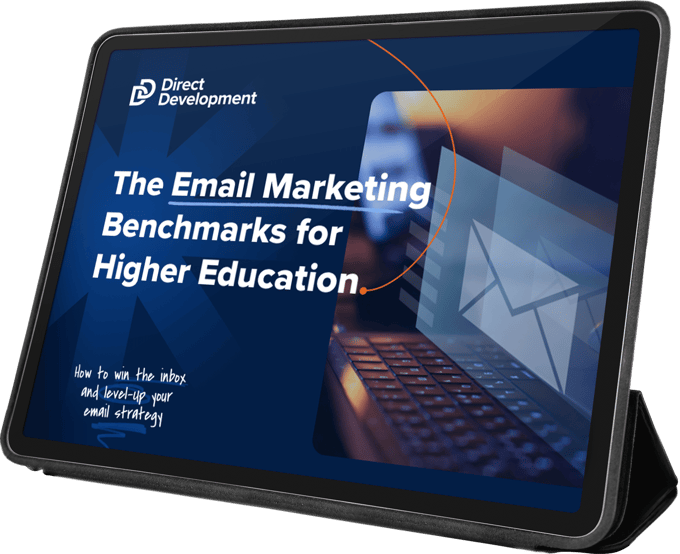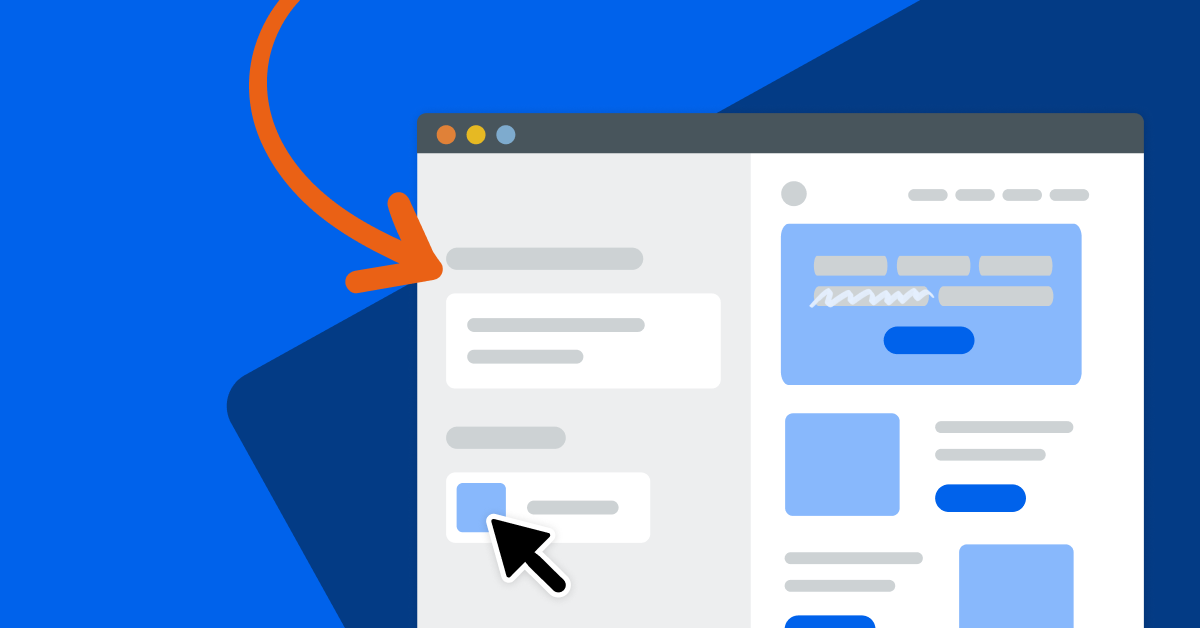4 Types of Effective Emails that Consistently Convert (and 2 Free Email Templates)

February 09, 2021

Transactional marketing emails often leave your prospects uninterested at best and cringing at worst. Like a drive-through line at McDonald’s, where people exchange a swipe of a card with fries and a Big Mac, transactional emails are purely an exchange of goods. Of course, you want your prospects to apply, to RSVP, to request more information, etc.—so how do you transform your marketing emails into more engaging, effective tactics of your overall marketing strategy for student recruitment?
A marketer succeeds when the reader perceives the email as relational - not transactional. The email further engages the reader, who has a sense that they have been helped and informed, not sold to. In turn, the email builds trust and brand loyalty.
It boils down to this: delight is a big part of the enrollment flywheel (along with attracting and engaging prospects). Obviously, conversion is the goal; you want to send emails that consistently convert. The good news is that you can do both. The better news is this: emails that consistently delight are the ones that are more likely to convert your prospects.
As an enrollment marketer, there are several different types of emails to include in your email marketing strategy. Let’s dive into four categories of effective emails you should be sending to your prospects and/or inquiries (and how you can supercharge them for maximum delight and impact).
Marketing Email Type #1: The welcome/introductory email
A nurturing inquiry comm flow (a series of 3-6 emails over a span of 4-6 weeks) is a fantastic way to encourage your prospects through the funnel. In these emails, make sure you showcase your campus culture, key takeaways about career outcomes, financial aid, class sizes, etc, to increase brand awareness and cultivate affinity.
But your email shouldn’t read like a resume. The trick is to make it feel more like a continuing conversation. Give examples of what a prospect will get out of their education. Will they have X and Y skills to become a film director, a CEO, or a business executive? Tell Lisa how she’ll be prepared and equipped through her courses. Introduce Theo to the players who will help him achieve his goals, from academic counselors to faculty.
Sprinkle in important stats about job outcomes and rankings but always focus on the prospective student. The series of emails should give them more information and value, offer additional resources, and help them envision themselves attending your institution and succeeding.
So how do you make this happen in a way that will delight your prospects? Here are a few ideas:
- Include a video with an alumnus detailing their career journey (people watch an average of 16 hours of online video per week—now is the time to take advantage of that medium).
- Insert a few quotes from first-year students about why they chose your school or program.
- Use an aerial video of your campus to give them a sense of scale and what the buildings are like (especially vital when tours are cancelled).
- Highlight your unique value proposition and think outside of the box. Don’t just focus on academic value, but think about other features and experiences, like state-of-the-art science labs, SEC football games, exciting research projects (prime example: Covid-19 vaccines), student-led clubs and initiatives, etc.
Below is an example of the first comm flow email sent to inquiries of the University of Maryland’s undergraduate biocomputational engineering program. It focuses on the fields where graduates can make an impact, and includes several links for additional information, like a curriculum page and a careers eBook.
Marketing Email Type #2: The announcement/invitation email
An announcement or invitation email can take on many different forms, but the main objective is virtually the same: introduce the audience to something new. You could be sharing a new resource (like an eBook or a blog), inviting prospects to an event, publicizing a new program, or revealing an initiative like a special tuition discount.
There are a variety of ways to approach this targeted email, which usually promotes one primary offer, with a few secondary conversion pathways. Here are a few options:
1. The Power Stat
- This email kicks off with enticing data—maybe the industry related to your degree is predicted to grow by 20% in the next 10 years, or maybe your tuition discount makes you one of the least expensive business schools in the southeast. Whatever it is, consider using a graphic to visualize the stat(s) or display them in bullet points. Then, make your case about your offer by tying it into the data. And don’t be afraid to use various angles and value propositions for the same offer (later on in the prospect journey, you may be able to narrow in on their interests more).
2. The FOMO Fighter
- Evoking a “fear of missing out” in your audience takes skill, but could be extremely effective This works particularly well when there’s some exclusivity and timeliness to your offer. Are you capping attendees to your graduate info session so that prospects can mingle with current students in a smaller environment? In your eBook, do you have particularly intriguing insights from faculty about succeeding in courses? Make sure you bring up these facts in your email.
3. The Subtle Sell
- Yes, the word “sell” is in the description here, but this approach is far from the sell-at-all-costs mentality. It’s imperative to pack your email to the brim with value before pitching your offer. Write a case study about career outcomes of your graduates, invite a current student or alumnus to write about their experience (a testimonial), or include a Q&A with an admissions counselor or faculty member about the application process and program details. Then, casually mention (“by the way,”) that you’re hosting a student panel where prospects can ask their questions, or that you have a new program brochure available—now, your prospects are further engaged and primed for conversion.
No matter which type of email you choose, remember the cardinal rule: add value before you extract value. Give me something I can take away from your email, whether or not I click on your CTA and ultimately convert on your form.
It’s usually advised to not stop at just one invitation or announcement email, so try different approaches and see which one appeals most to your target audience; or segment your audience based on where they are in the applicant journey and test a variety of styles.
Pro tip: Make sure that the way you describe your offer in your emails matches your copy on landing pages to avoid any kind of confusion or friction for the reader. Check out this recent blog post for more tips on boosting your landing page strategy.
This Vanderbilt email which announces a new program and its associated guide had a nearly 50% open rate and a 1.5% click rate. Almost 20% of the total clicks on the email ended up as submissions for the eBook.
Marketing Email Type #3: The reminder email
When I say “reminder email,” two topics probably come to mind: events and application deadlines. Both of these are frequently included in an enrollment marketer’s email marketing strategy.
Event reminders to people who have RSVP’d are particularly significant. Make sure you test when to send out these emails: one week, two days, or one hour before the event? Depending on your audience and type of program, when you send your reminders can have a big effect on show rates, especially for virtual events. Also, be very specific about how prospects can access the webinar, and offer other content pathways, like bios for the speakers, and other events to sign up for.
In regards to application deadline reminder emails—the key here is to keep things interesting! An email like this is an opportunity to present the mouthwatering special of the evening, not the boring soup of the day.So, why are so many enrollment marketers flunking at one of the most important emails you can send to prospects?
In order to win, put a lot of thought into app reminder emails and customize them as much as possible. Use personalized content and craft a message about a prospect’s program of interest instead of a generic blast email for all programs. Highlight your most popular blog posts. Tell a story that showcases what a student will be able to accomplish by pursuing their degree. Offer office hours with an admissions team for any application questions. Use current events to make your point and infuse urgency about why people should apply now—the political landscape for a political science major, vaccine demand for bioengineering students, the work-from-home trend for a career changer with more time to commit to graduate study.
Here are a few more ideas to spice up your app deadline reminder emails:
- Include a how-to apply video
- Offer PDFs of application checklists
- Feature a countdown clock or timer until the application deadline
- Pull in a variety of student-sourced Instagram posts (any public posts with school affiliated hashtags)
- As a last-chance reminder email, remove any graphics, headers, and footers so it feels more personal and a little more like 1:1 communication with an inquiry
Below is an app reminder email for the University of San Diego Kroc School, which invites prospects to sign up for office hours with an admissions team for application guidance and features conversational copy that demonstrates a helpful, supportive school culture.
Marketing Email Type #4: The thank you email
Thank you emails often have the highest open rates of all types of emails—sometimes they can even generate twice the open rate and click-through-rate of other marketing emails (HubSpot).
Can you imagine, twice the engagement? And yet so often, marketers are squandering this essential tool in their email marketing strategy toolkit. Thank you emails are often done wrong or (shudder) not done at all. There’s nothing wrong with thank you emails being short and to-the-point. But they absolutely need to have conversion pathways. Somebody just indicated their interest in your program by registering for an event, downloading an eBook, or requesting more information. They are through the door and looking for the living room. Give them a reason to stay a while by going beyond a simple confirmation email.
You can do this by showing off your popular blog posts, pillar pages, explainer videos, recorded webinars, and eBooks. Make it easy for them to connect with you by including links to a request more information page or a meeting scheduler page. Use personalized content so that you include offers they haven’t already completed, i.e. don’t invite them to a different event which they’re already signed up for (another reason why a robust marketing automation platform like HubSpot is imperative so you can track all contact activity).
Pro tip: To learn more about how a lack of intentional pathways in your thank you emails kills engagement and adds friction to the applicant journey, read my post, “How to Eliminate Dead Ends for Prospective Students.”
This Sacred Heart University thank you email has several resources that may benefit someone who downloads their work-from-home guide:
No matter which email type you use, follow best practice for all emails: ensure your design layout is conversion-centric. Make the emails easy to consume, skimmable, and abundantly clear about the offers. In general, a professional layout is best along with concise, digestible copy (though high-value offers can definitely have longer emails). Make sure that you conduct frequent A/B tests, use a variety of CTA types, and come up with highly compelling subject lines and preview texts.
Want more tips for an effective email marketing strategy? Check out this post for more email pointers and examples.
If you’d like a little help with your email marketing strategy, we’re always available to lend a hand. Contact us today and we can review your goals and give you custom insights for more effective emails.
Get fresh ideas, giant-slaying tactics, and detailed instructions for smarter enrollment marketing.
Service Categories: Enrollment Marketing, Creative & Content










.png)


.png)